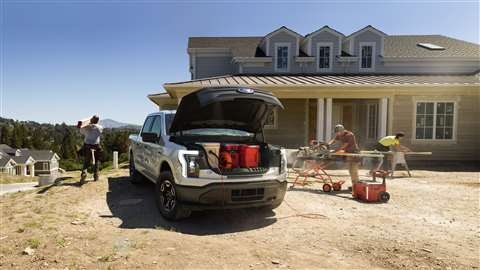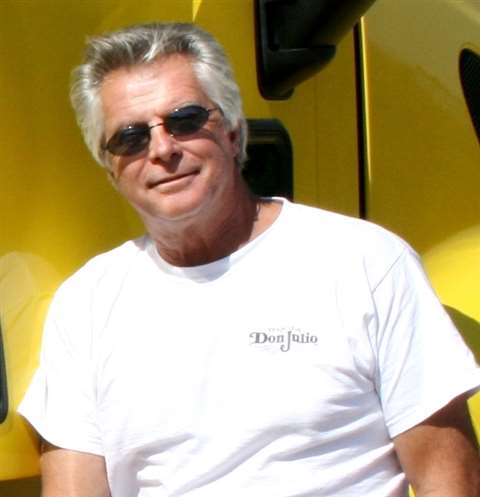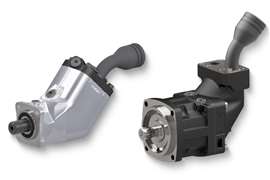Street Smarts: Why interest is growing in all-electric pickups
08 February 2022
I have been a booster for Rivian since the electric vehicle manufacturer first announced its intention to build the R1T pickup and the R1S sport utility. So I was a little surprised that the market reacted strongly to its recent IPO. However, as enthusiastic as I am, I would never have expected its market cap at public launch would put even Volkswagen in the shade.
And the backlog for Ford’s eLightning F-150 battery electric pickup for production startup next year currently stands at 150,000 units. Again, while undoubtedly a thoroughly well thought-out package, that’s pretty extraordinary.
 The backlog for Ford’s F-150 Lightning battery electric pickup for production startup currently stands at 150,000 units. (Photo: Ford)
The backlog for Ford’s F-150 Lightning battery electric pickup for production startup currently stands at 150,000 units. (Photo: Ford)
So there’s a lot of interest in all-electric pickups.
There are others potentially out there, Lordstown Motors (originally Workhorse) is a maybe because its financial situation took a huge hit when the U.S. Postal Service decided to go with (partly) conventional powertrains from Oshkosh to replace its aging fleet of mini-package cars.
There’s Bollinger, whose boxy styling harks back to early Land Rovers, GM’s all-electric Silverado (due to break cover in January 2022 at the Consumer Electronics Show) and Hummer. And of course, there is the sci-fi styled Tesla Cybertruck which is about as far removed from the boxy Bollinger as you could imagine. They are all bookended by Ford’s eLightning and Rivian’s R1T with the former having wide application in the utilities markets and the Rivian which is targeted to the outdoorsy consumers who want to despoil the backwoods with an environmentally conscious truck.
One of the startups is already gone. The Nikola Badger, which was to be produced by GM for the hydrogen/battery powered Class 8 manufacturer Nikola is already dead in the water, but Nikola seems to be making headway, especially since it is already getting out prototypes of its cabover in Europe in association with Iveco, the erstwhile commercial vehicle division of Fiat. That’s an indication that Nikola could make it, though its value has slipped from $29 billion dollars to just $6 billion.
Ford’s seeming success is a likely indication of what will happen when the legacy brands get into their electric pickup powertrains. Dodge’s Ram brand is an obvious candidate and Toyota is another, especially with its fuel-cell range-extender that is already in the Mirai sedan and is stacked with a second fuel cell in the prototype Class 8 Kenworth T860E we are scheduled to drive next month.
Nissan has been less noisy about its electric future, though the just overhauled Frontier may have an electric counterpart waiting in the wings. An intriguing thought would be an electric Honda Ridgeline. It has style and great practicality on its side and would be a worthy competitor to the Rivian R1T in the leisure markets.
 Steve Sturgess is an independent trucking writer and consultant based in Corona, Calif. His blog is at www.stevesturgess.com
Steve Sturgess is an independent trucking writer and consultant based in Corona, Calif. His blog is at www.stevesturgess.com
Meanwhile, Rivian seems to be in an unassailable position, particularly as it is backed by Amazon that has a 20% stake and is in place with its order for 100,000 last-mile delivery vehicles by 2030 with 10,000 initially for 2022. Rivian has revealed its design for that vehicle, which is a MB Sprinter/Ford Transit sized high roof in three weight capacities. As it is a strictly urban vehicle, Rivian has gone to great lengths to make it visually attractive to the extent that it may star in upcoming Disney “Cars” movies. It has a regular driver’s door, so Amazon delivery drivers won’t be cruising around with the door open, though the curbside door is a sliding pocket design. And while not in the initial product run, there are potential plans to include a drone port in the roof for front-door home deliveries.
The powertrain is similar to the pickup R1T with a skateboard battery pack and a single drive motor. The van, unlike the pickup, will be mostly steel and equipped with several size batteries. Oddly enough, the biggest van may be built with the smallest battery as these high-volume vehicles operate in densely populated urban areas where significant drops at apartment buildings, for instance, might see the van all but emptied at a single drop point. Typically these super-cube vans may see as little as 10 miles per day.
There’s little doubt, Rivian/Amazon are on the right track with the vans. But the pickup may be a harder row to hoe, especially here in Colorado, where deafening aftermarket exhausts and choking black clouds of diesel smoke are very much the norm.
POWER SOURCING GUIDE
The trusted reference and buyer’s guide for 83 years
The original “desktop search engine,” guiding nearly 10,000 users in more than 90 countries it is the primary reference for specifications and details on all the components that go into engine systems.
Visit Now
STAY CONNECTED




Receive the information you need when you need it through our world-leading magazines, newsletters and daily briefings.
CONNECT WITH THE TEAM












